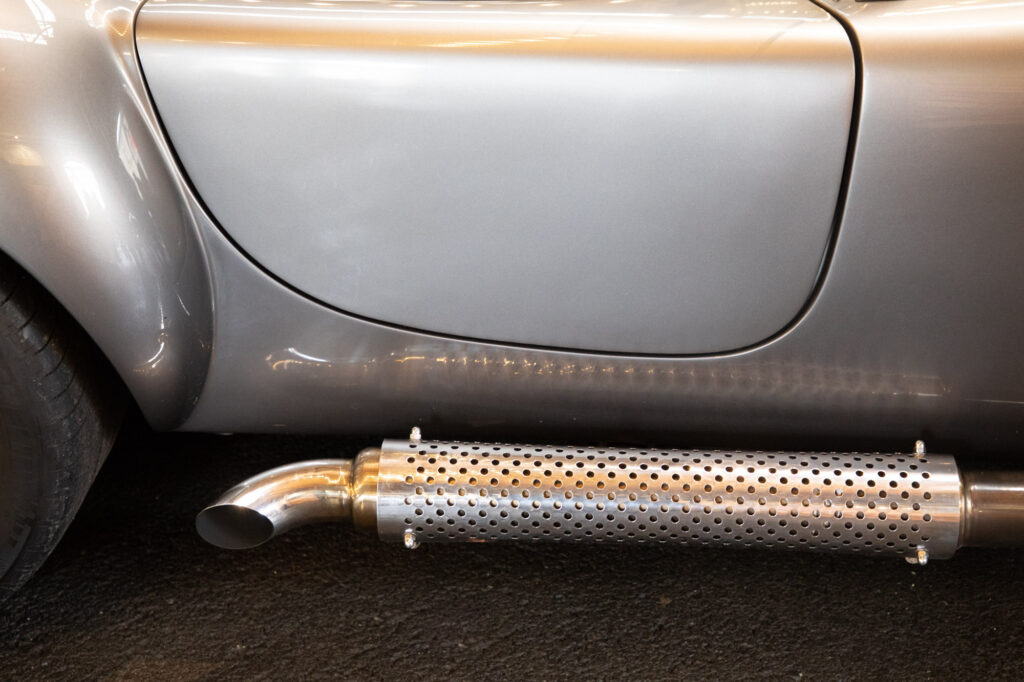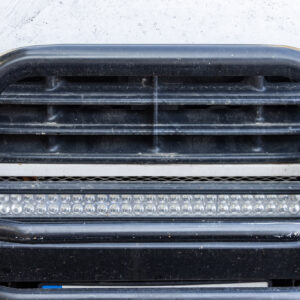The exhaust system, and by extension the exhaust pipes, give combusted gas outlets to escape from the engine. While most vehicles have an exhaust pipe at their rear, some models release gas emissions through side pipes.
What Are Side Pipes?
Side pipes (also known as side exhaust pipes) are exhaust system pipes that release gasses from the engine to the sides as opposed to the rear.
Exhaust pipes are crucial in internal combustion engines because they minimize engine noise and divert toxic gasses away from the vehicle.
Side pipes are a pleasant alternative to the common rear exhaust pipe most modern vehicles are equipped with because they offer a different look. But unique placement aside, do they provide other benefits?
Benefits of Vehicles with Side Pipes

Side pipes are surprisingly practical. Besides their unique look, side pipes make it easier to access the rear suspension and shift the vehicle’s weight away from the rear.
Better Access to Rear Suspension
The side pipe’s location gives the vehicle more room for easy rear suspension. The extra space helps improve stability, especially when driving over potholes and other unstable surfaces.
Pleasant to Look At
Rear exhaust pipes are great, but there’s a certain novelty that comes with driving a vehicle equipped with side exhaust pipes. This is because side pipes alter the vehicle’s silhouette while simultaneously adding some tasteful metallic colors to its side profile.
Shifts the Weight of the Vehicle
Moving the exhaust pipes to the sides shifts weight away from the rear, pushing it forward and closer toward the vehicle’s midsection.
The shift gives the front wheels more grip on the road because there’s more weight pushing them down. As a result, the vehicle’s ability to steer improves – especially at high speeds.
Though the rear wheels won’t have as much traction as vehicles with the standard rear exhaust pipe, the tradeoff of the weight shift is better handling and control.
Drawbacks of Vehicles with Side Pipes
If you want to replace your vehicle’s rear exhaust pipe with a side pipe, be ready for a costly installation. You can also expect increased smog and noise and a higher risk of getting burned by the hot pipe due to its placement.
Costly Installation
Vehicles that don’t roll out the dealership with side pipes can get these exhaust parts as a costly modification.
While it’s possible to install side pipes yourself, it’s strongly recommended to leave any modifications to something as critical as a vehicle’s exhaust system to trained experts.
Expect to spend between $300 to $1,500 and more to get your hands on some side pipes for your vehicle. Not that this range doesn’t account for installation costs.

Inconvenient Smoke and Noise Pollution
Because of their location, side pipes divert noise and exhaust fumes to the vehicle’s sides as opposed to its rear.
Rear exhaust pipes release fumes backward, likely towards the open air or another vehicle. On the other hand, vehicles with side pipes tend to blow smoke and generate noise towards passersby on the sidewalk. It’s disruptive, and a lot of people might complain about your vehicle.
Increased Risk of Burn Injuries
Most people are used to the exhaust pipe being at the rear, but side pipes are usually right below the doors. If you and your passengers aren’t paying attention, you could come in contact with the hot pipe and get burn injuries.
This danger is what makes installing side pipe heat shields a must if you want to avoid such injuries. But even then, the odds of you getting injured are never zero.
Signs of a Damaged Side Pipe
Whether they’re on the rear or the sides, it’s incredibly dangerous to drive with damaged exhaust pipes. So keep an eye out for the following signs that the side pipe (and the exhaust system) might have developed issues.
- There’s an inexplicable burning smell coming from the engine
- The engine and/or the exhaust are louder than usual
- There are knocking or banging noises from underneath the vehicle
- The vehicle’s fuel economy is decreasing
- There are more frequent engine misfires, and it takes longer to accelerate
- There’s rust forming in the exhaust pipe or the muffler
- The exhaust pipe has been dented or displaced
- The smell of exhaust gasses gets noxious and unpleasant
Find Suitable Side Pipes For Your Vehicle
Do you need to replace side pipes that have worn out or on the verge of falling apart? Or are you planning to personalize your vehicle by removing its conventional exhaust pipe and installing side-mounted pipes? At CarParts.com, you can easily find the right side pipes for your car or truck.
Make CarParts.com your first and only stop for replacement parts and accessories like side pipes. Plug your car’s year, make, and model into our website’s built-in vehicle selector, and you’ll see our products that meet your requirements. After finding the part that fits your budget, you only have to tap your phone’s screen to place your order. If you live in the continental US and order before noon ET, you can get your new side pipes in as quickly as two business days.
When you need affordable, high-quality side pipes, look no further than CarParts.com. Check out our selection of side pipes and get a great deal on your new exhaust part today!
Any information provided on this Website is for informational purposes only and is not intended to replace consultation with a professional mechanic. The accuracy and timeliness of the information may change from the time of publication.
































